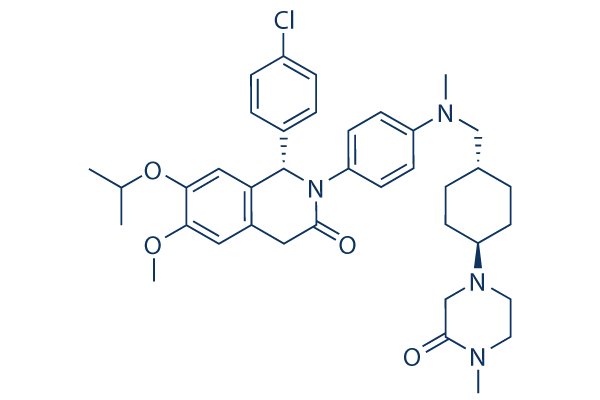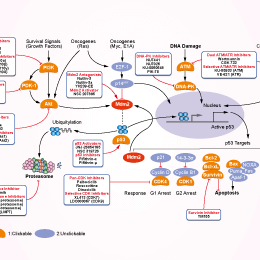
- Bioactive Compounds
- By Signaling Pathways
- PI3K/Akt/mTOR
- Epigenetics
- Methylation
- Immunology & Inflammation
- Protein Tyrosine Kinase
- Angiogenesis
- Apoptosis
- Autophagy
- ER stress & UPR
- JAK/STAT
- MAPK
- Cytoskeletal Signaling
- Cell Cycle
- TGF-beta/Smad
- DNA Damage/DNA Repair
- Compound Libraries
- Popular Compound Libraries
- Customize Library
- Clinical and FDA-approved Related
- Bioactive Compound Libraries
- Inhibitor Related
- Natural Product Related
- Metabolism Related
- Cell Death Related
- By Signaling Pathway
- By Disease
- Anti-infection and Antiviral Related
- Neuronal and Immunology Related
- Fragment and Covalent Related
- FDA-approved Drug Library
- FDA-approved & Passed Phase I Drug Library
- Preclinical/Clinical Compound Library
- Bioactive Compound Library-I
- Bioactive Compound Library-Ⅱ
- Kinase Inhibitor Library
- Express-Pick Library
- Natural Product Library
- Human Endogenous Metabolite Compound Library
- Alkaloid Compound LibraryNew
- Angiogenesis Related compound Library
- Anti-Aging Compound Library
- Anti-alzheimer Disease Compound Library
- Antibiotics compound Library
- Anti-cancer Compound Library
- Anti-cancer Compound Library-Ⅱ
- Anti-cancer Metabolism Compound Library
- Anti-Cardiovascular Disease Compound Library
- Anti-diabetic Compound Library
- Anti-infection Compound Library
- Antioxidant Compound Library
- Anti-parasitic Compound Library
- Antiviral Compound Library
- Apoptosis Compound Library
- Autophagy Compound Library
- Calcium Channel Blocker LibraryNew
- Cambridge Cancer Compound Library
- Carbohydrate Metabolism Compound LibraryNew
- Cell Cycle compound library
- CNS-Penetrant Compound Library
- Covalent Inhibitor Library
- Cytokine Inhibitor LibraryNew
- Cytoskeletal Signaling Pathway Compound Library
- DNA Damage/DNA Repair compound Library
- Drug-like Compound Library
- Endoplasmic Reticulum Stress Compound Library
- Epigenetics Compound Library
- Exosome Secretion Related Compound LibraryNew
- FDA-approved Anticancer Drug LibraryNew
- Ferroptosis Compound Library
- Flavonoid Compound Library
- Fragment Library
- Glutamine Metabolism Compound Library
- Glycolysis Compound Library
- GPCR Compound Library
- Gut Microbial Metabolite Library
- HIF-1 Signaling Pathway Compound Library
- Highly Selective Inhibitor Library
- Histone modification compound library
- HTS Library for Drug Discovery
- Human Hormone Related Compound LibraryNew
- Human Transcription Factor Compound LibraryNew
- Immunology/Inflammation Compound Library
- Inhibitor Library
- Ion Channel Ligand Library
- JAK/STAT compound library
- Lipid Metabolism Compound LibraryNew
- Macrocyclic Compound Library
- MAPK Inhibitor Library
- Medicine Food Homology Compound Library
- Metabolism Compound Library
- Methylation Compound Library
- Mouse Metabolite Compound LibraryNew
- Natural Organic Compound Library
- Neuronal Signaling Compound Library
- NF-κB Signaling Compound Library
- Nucleoside Analogue Library
- Obesity Compound Library
- Oxidative Stress Compound LibraryNew
- Plant Extract Library
- Phenotypic Screening Library
- PI3K/Akt Inhibitor Library
- Protease Inhibitor Library
- Protein-protein Interaction Inhibitor Library
- Pyroptosis Compound Library
- Small Molecule Immuno-Oncology Compound Library
- Mitochondria-Targeted Compound LibraryNew
- Stem Cell Differentiation Compound LibraryNew
- Stem Cell Signaling Compound Library
- Natural Phenol Compound LibraryNew
- Natural Terpenoid Compound LibraryNew
- TGF-beta/Smad compound library
- Traditional Chinese Medicine Library
- Tyrosine Kinase Inhibitor Library
- Ubiquitination Compound Library
-
Cherry Picking
You can personalize your library with chemicals from within Selleck's inventory. Build the right library for your research endeavors by choosing from compounds in all of our available libraries.
Please contact us at info@selleckchem.com to customize your library.
You could select:
- Antibodies
- Bioreagents
- qPCR
- 2x SYBR Green qPCR Master Mix
- 2x SYBR Green qPCR Master Mix(Low ROX)
- 2x SYBR Green qPCR Master Mix(High ROX)
- Protein Assay
- Protein A/G Magnetic Beads for IP
- Anti-Flag magnetic beads
- Anti-Flag Affinity Gel
- Anti-Myc magnetic beads
- Anti-HA magnetic beads
- Poly DYKDDDDK Tag Peptide lyophilized powder
- Protease Inhibitor Cocktail
- Protease Inhibitor Cocktail (EDTA-Free, 100X in DMSO)
- Phosphatase Inhibitor Cocktail (2 Tubes, 100X)
- Cell Biology
- Cell Counting Kit-8 (CCK-8)
- Animal Experiment
- Mouse Direct PCR Kit (For Genotyping)
- New Products
- Contact Us
research use only
NVP-CGM097 MDM2/MDMX inhibitor
NVP-CGM097 is a highly potent and selective MDM2 inhibitor with Ki value of 1.3 nM for hMDM2 in TR-FRET assay. It binds to the p53 binding-site of the Mdm2 protein, disrupting the interaction between both proteins, leading to an activation of the p53 pathway.

Chemical Structure
Molecular Weight: 659.26
Purity & Quality Control
Batch:
Purity:
99.72%
99.72
Related Products
| Related Targets | MDM2 MDMX p53-MDM2 interaction | Click to Expand |
|---|---|---|
| Related Products | Nutlin-3 Nutlin-3a RG-7112 Idasanutlin (RG7388) SAR405838 NSC 207895 Siremadlin (HDM201) Nutlin-3b MX69 YH239-EE | Click to Expand |
| Related Compound Libraries | Autophagy Compound Library Apoptosis Compound Library Ferroptosis Compound Library Pyroptosis Compound Library Mitochondria-Targeted Compound Library | Click to Expand |
Signaling Pathway
Cell Culture and Working Concentration
| Cell Lines | Assay Type | Concentration | Incubation Time | Formulation | Activity Description | PMID |
|---|---|---|---|---|---|---|
| SJSA1 cells | Function assay | Inhibition of cell proliferation of human SJSA1 cells, GI50=0.35 μM | ||||
| HCT116 cells | Function assay | Inhibition of cell proliferation of human HCT116 cells expressing p53, IC50=0.454 μM | ||||
| PC3 cells | Function assay | Inhibition of mTORC2 in human PC3 cells assessed as inhibition of AKT phosphorylation at S473 after 1 hr, IC50=0.022 μM | ||||
| Click to View More Cell Line Experimental Data | ||||||
Mechanism of Action
| Targets |
|
|---|
In vitro |
||||
| In vitro | NVP-CGM097 binding to MDM2 is species dependent. It was shown to be selective for the p53:MDM2 interaction compared to the p53:MDM4 interaction (1176-fold selectivity) and the Ras:Raf interaction (3000-fold selectivity). In addition, this compound showed no significant activity against Bcl-2:Bak, Bcl-2:Bad, Mcl-1:Bak, Mcl-1:NOXA, XIAP:BIR3, and c-IAP:BIR3 protein-protein interactions. It was able to significantly redistribute wild-type p53 into the cell nucleus with an IC50 of 0.224 μM, demonstrating its ability to inhibit the p53:MDM2 interaction in living cells. This compound treatment leads to p53 nuclear translocation that results in cell growth inhibition in a p53-dependent manner[1]. | |||
|---|---|---|---|---|
| Cell Research | Cell lines | Bon1 cells, NCI-H727 cells, Got1 cells | ||
| Concentrations | 0.1 nM-2500 nM | |||
| Incubation Time | 48 hrs, 96 hrs, 144 hrs or 216 hrs | |||
| Method | Cells were seeded in appropriate densities (Bon1 cells: 1500 cells/well, NCI-H727 cells: 2000 cells/well, Got1 cells: 50000 cells/well) into 96-well plates and grown for 24 hrs in complete medium containing serum/antibiotic. The next day, the cells were incubated with various concentrations of NVP-CGM097 (0.1 nM-2500 nM), 5-fluorouracil (100 nM-100 µM), streptozotocin (1 nM-100 µM), temozolomide (1 µM-1 mM), everolimus (10 nM) or octreotide (100 nM-10 µM) in 10 % FBS medium (antibiotic-free). After 48 hrs, 96 hrs, 144 hrs or 216 hrs the metabolic activity was measured with "Cell Titer 96 Aqueous One Solution" cell proliferation assay. The measurement was performed at 492 nm with an ELISA plate reader. | |||
In Vivo |
||
| In vivo | After iv administration, the total blood clearance (CL) of NVP-CGM097 was 5 mL/min/kg for mouse, 7 mL/min/kg for rat, 3 mL/min/kg for dog, and 4 mL/min/kg for monkey. On the basis of the respective hepatic blood flows, this compound showed a consistent low total blood CL in all species (5-10% of hepatic blood flow). The apparent terminal half-life (t1/2) was long in rodents and monkey (6-12 h) but was comparatively longer in dogs (20 h). After oral dosing, it was well absorbed with Tmax occurring between 1 and 4.5 h in all species tested. The oral bioavailability (%F) was high in mouse, rat, and dog and moderate in monkey. This chemical was able to inhibit the interaction between p53 and MDM2 and reactivate the p53 pathway in vivo in a MDM2-amplified SJSA-1 human tumor model. p21 mRNA levels were found to increase concomitantly with levels of compound 1 in tumor-bearing rats dosed at 30 mg/kg. Daily treatment with this agent dose dependently and significantly inhibited SJSA-1 tumor growth in rats[1]. | |
|---|---|---|
| Animal Research | Animal Models | Sprague-Dawley rat |
| Dosages | 1 mg/kg | |
| Administration | i.v. | |
References |
|
Chemical Information
| Molecular Weight | 659.26 | Formula | C38H47ClN4O4 |
| CAS No. | 1313363-54-0 | SDF | Download SDF |
| Synonyms | CGM-097 | ||
| Smiles | CC(C)OC1=C(C=C2CC(=O)N(C(C2=C1)C3=CC=C(C=C3)Cl)C4=CC=C(C=C4)N(C)CC5CCC(CC5)N6CCN(C(=O)C6)C)OC | ||
Storage and Stability
| Storage (From the date of receipt) | |||
|
In vitro |
DMSO : 65 mg/mL ( (98.59 mM) Moisture-absorbing DMSO reduces solubility. Please use fresh DMSO.) Ethanol : 65 mg/mL Water : Insoluble |
Molecular Weight Calculator |
|
In vivo Add solvents to the product individually and in order. |
In vivo Formulation Calculator |
|||||
Preparing Stock Solutions
Molarity Calculator
In vivo Formulation Calculator (Clear solution)
Step 1: Enter information below (Recommended: An additional animal making an allowance for loss during the experiment)
mg/kg
g
μL
Step 2: Enter the in vivo formulation (This is only the calculator, not formulation. Please contact us first if there is no in vivo formulation at the solubility Section.)
% DMSO
%
% Tween 80
% ddH2O
%DMSO
%
Calculation results:
Working concentration: mg/ml;
Method for preparing DMSO master liquid: mg drug pre-dissolved in μL DMSO ( Master liquid concentration mg/mL, Please contact us first if the concentration exceeds the DMSO solubility of the batch of drug. )
Method for preparing in vivo formulation: Take μL DMSO master liquid, next addμL PEG300, mix and clarify, next addμL Tween 80, mix and clarify, next add μL ddH2O, mix and clarify.
Method for preparing in vivo formulation: Take μL DMSO master liquid, next add μL Corn oil, mix and clarify.
Note: 1. Please make sure the liquid is clear before adding the next solvent.
2. Be sure to add the solvent(s) in order. You must ensure that the solution obtained, in the previous addition, is a clear solution before proceeding to add the next solvent. Physical methods such
as vortex, ultrasound or hot water bath can be used to aid dissolving.
Tech Support
Answers to questions you may have can be found in the inhibitor handling instructions. Topics include how to prepare stock solutions, how to store inhibitors, and issues that need special attention for cell-based assays and animal experiments.
Tel: +1-832-582-8158 Ext:3
If you have any other enquiries, please leave a message.
* Indicates a Required Field






































